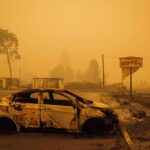Reinsurance rates may be edging higher only now, but the companies’ shares could still surge amid investor hopes that disasters, including Japan’s earthquake, will result in much higher rates in the future.
Going into 2011, brokers and analysts estimated it would take perhaps $50 billion in catastrophe losses to stem years of declining reinsurance prices and “harden” the market, with even greater losses needed to push rates higher.
The industry may very well have hit and even passed that mark, taking into account Middle East unrest, the Feb. 3 cyclone in Australia, the earthquake in New Zealand on Feb. 22, and the March 11 quake and tsunami in Japan. Changes to the hurricane loss models from catastrophe specialist RMS may also have boosted loss expectations, and therefore rates.
By most accounts, those disasters were still not enough to substantially increase pricing, and major brokers disagree about whether rates are even slightly higher now.
“Absent another event, we do not foresee the same level of price increases that we saw at the beginning of 2006,” William Eyre Jr., the managing director of the reinsurance brokerage at Towers Watson, said in the firm’s review of rates at the April 1 renewal season. “The 2010-2011 losses are widely believed to be more of a significant ‘earnings’ event rather than an impairment to capital,” Eyre said. Those 2006 rate increases that followed the devastating 2005 storm season, which included Hurricane Katrina, were the last time the industry had real and sustained pricing power.
Over time that power eroded and prices started falling. A lack of notable disasters meant reinsurers had excess capital to offer, and it meant more competitors in the marketplace (as big disasters tend to wipe out some smaller players).
No One Agrees
The top three insurance and reinsurance brokers — Aon Corp., Marsh & McLennan’s Guy Carpenter and Willis Group — generally agreed that the Jan. 1 renewal season brought new price declines of up to 10 percent. But they are not even close when it comes to April 1, one of the key annual renewal dates for reinsurance contracts in the United States and Asia.
Aon Benfield, in its April 1 update, said U.S. property and casualty reinsurance rates fell 5 percent to 10 percent. Willis Group said a hard market is near, but it has not yet been triggered. Guy Carpenter, however, said U.S. pricing was “roughly flat to up slightly.” The disparity is notable, although the chairman of the Aon Benfield group that produced their report said nothing in its own results was surprising.
“I too am surprised by the differences,” Bryon Ehrhart, chairman of Aon Benfield Analytics, said. “We had results that were in line with what we said at the 1 January renewals.”
Ehrhart said there absolutely were changes visible on a local level, but the global market had yet to see the event that could turn it en masse.
“The idea of a Japanese loss of the size we’re talking about, which is a big event but it’s not big relative (to industry capital), the idea that that’s going to turn a U.S. reinsurance market, and even some say a U.S. insurance market, is in my mind quite far fetched,” he said in an interview.
Stock Market
The lack of certainty about the market’s direction seems to be playing out in the stock market as well.
“There may well be some modest price increases at U.S. mid-year renewals, but I don’t think that recent earthquakes have caused a broader turn in the market beyond loss affected areas,” said Tom Dorner, an analyst at Oriel Securities in London.
“However, if the U.S. hurricane season sees major losses, then this could provide a catalyst for better catastrophe pricing across the board,” he said.
Shares in the world’s largest reinsurers were mixed in the first quarter. Swiss Re rose 4.5 percent; Munich Re fell 2.2 percent; Hannover Re fell 4 percent; SCOR rose 1.1 percent, Transatlantic Holdings lost 5.7 percent and PartnerRe was down 1.4 percent. Some analysts, though, say the mere images of disasters are enough to drive shares higher, even if pricing is not much better.
“The key take-away is that stocks can move even if pricing doesn’t materialize. We want our ratings actions to send a clear message: Buy these stocks now,” Citigroup analysts said in an April 4 report upgrading six reinsurers, including PartnerRe and Transatlantic.
Others said some of the benefits were already priced into stocks but there could be room for further growth in the next few months.
Topics Trends Catastrophe USA Pricing Trends Reinsurance Market Aon Japan
Was this article valuable?
Here are more articles you may enjoy.


 Reserve Strengthening for Casualty Lines Not Over: Moody’s
Reserve Strengthening for Casualty Lines Not Over: Moody’s  Insurer Chubb Readies $350M Payout Tied to Baltimore Bridge Collapse
Insurer Chubb Readies $350M Payout Tied to Baltimore Bridge Collapse  Biden Vetoes Bid to Repeal US Labor Board Rule on Contract, Franchise Workers
Biden Vetoes Bid to Repeal US Labor Board Rule on Contract, Franchise Workers  The Top 15 U.S. Metros with High Exposure to Wildfire Risk
The Top 15 U.S. Metros with High Exposure to Wildfire Risk 


